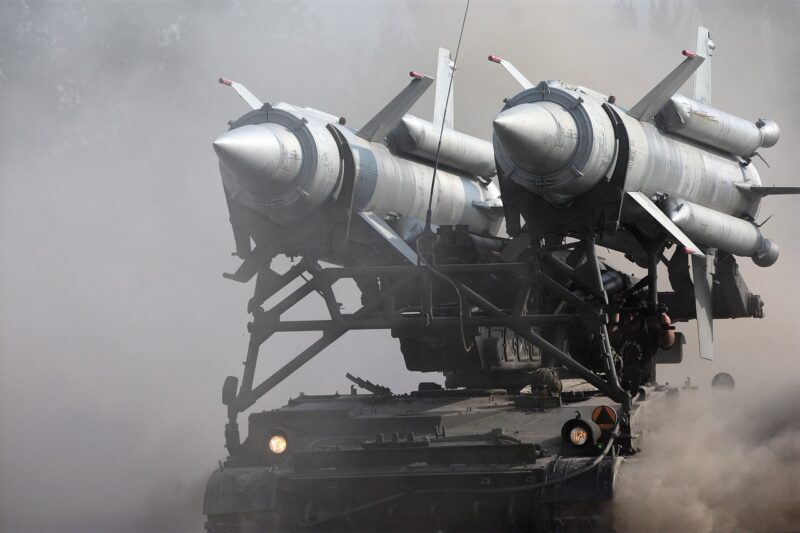Weapons of the Future: What Science Fiction Can Teach Us About Tomorrow’s Arsenal
November 17, 2024

As technology advances at an unprecedented rate, the line between science fiction and reality blurs, particularly in the realm of weaponry. For decades, science fiction writers have crafted narratives around futuristic weapons, often predicting technological advancements that would later become a reality. From laser guns to advanced artificial intelligence weaponry, the visions of imaginative creators not only entertain but also offer profound insights into the future of combat and defense. In this article, we will explore how science fiction has influenced real-world weapon development and what this means for the future of warfare.
1. The Role of Science Fiction in Shaping Military Technology
Science fiction has played a pivotal role in inspiring military advancements. Writers such as H.G. Wells, Isaac Asimov, and Philip K. Dick have envisioned technologies that questioned the very fabric of war and peace. Many concepts introduced in their works were later explored by scientists and military strategists.
For instance, the idea of automated drones and unmanned aerial vehicles (UAVs) can be traced back to stories about flying machines and advanced robots. Today, the U.S. military employs drones for reconnaissance and strike missions, illustrating how fiction can precede fact.
2. The Evolution of Laser Technology: From Fiction to Reality
One of the most captivating technologies depicted in science fiction is the laser weapon. Early portrayals in movies and books envisioned devastating beams capable of disintegrating targets in an instant.
Today, real-world applications of laser technology are emerging, such as:
- High-Energy Laser Systems: The U.S. Navy and other military organizations have developed systems like the Laser Weapon System (LaWS), which uses high-energy lasers to disable incoming threats, including drones and missiles.
- Laser Rangefinders: Used for precise targeting and artillery guidance, these devices are indispensable on modern battlefields.
Science fiction’s portrayal of laser technology underscores the potential of precision weaponry in military operations while raising ethical questions about their use in warfare.
3. Artificial Intelligence: The Silent Soldier of Tomorrow
Artificial intelligence (AI) is another concept that has transitioned from science fiction to the battlefield. In films like “Terminator” and “I, Robot,” we see AI controlling autonomous weapons, raising concerns about the implications of machines making life-or-death decisions.
Today, countries are investing heavily in AI technologies for military use. Examples include:
- Autonomous Drones: These can operate independently, engaging targets based on AI algorithms, reducing the risk to human pilots.
- Decision Support Systems: AI is now being integrated into military decision-making processes, helping commanders analyze vast amounts of data to make more informed choices swiftly.
While AI can enhance operational efficiency, it raises significant ethical dilemmas about accountability and control over autonomous weapons.
4. Cyber Warfare: The Invisible Battlefield
The concept of digital warfare often appears in science fiction narratives, warning of conflicts that transcend physical battles. The portrayal of hackers and cyber attacks has opened public perception to the vulnerabilities inherent in our digital infrastructure.
In recent conflicts, cyber warfare has manifested in real-world scenarios:
- State-sponsored Attacks: Nations have engaged in cyber operations to disrupt critical infrastructure, exemplifying a new frontier in warfare.
- Defensive Cyber Measures: Military agencies are now employing cybersecurity measures as crucial components of their operational readiness, shielding themselves from potential threats.
As we navigate the challenges of cyber warfare, echoes of science fiction serve as reminders of the vulnerabilities and complexities of our interconnected world.
5. Ethical Considerations: Weaponizing Technology
With advancements in weaponry stemming from scientific breakthroughs and science fiction concepts, we must confront the ethical implications of these developments. As militaries adopt new technologies, the questions surrounding their use gain urgency:
- Autonomy and Morality: How do we ensure that AI systems make decisions aligned with international humanitarian laws, especially in combat situations?
- Escalation of Conflicts: The advent of advanced weapons may lower the threshold for conflict, prompting nations to engage in warfare more readily.
Science fiction presents cautionary tales about the misuse of technology, emphasizing the need for dialogue among policymakers, scientists, and ethicists.
6. Conclusion: The Future We Are Creating
As we stand on the brink of unprecedented technological capabilities, the lessons from science fiction prompt us to reflect on the trajectory of our military practices. The weaponry of the future offers remarkable advancements—but also profound ethical dilemmas. It is imperative that we consider how our actions today will shape the arsenal of tomorrow.
In bridging the gap between fiction and reality, the persistent themes of accountability, morality, and the human cost of warfare must not be forgotten. As we develop and deploy new technologies, let us carry the wisdom gleaned from science fiction into the decisions that will define our future.
Whether we harness these advancements for peace or conflict will depend on our choices. The arsenal of tomorrow is being shaped by today’s innovations, and it is essential to ensure these innovations promote safety and humanity rather than destruction and despair.








